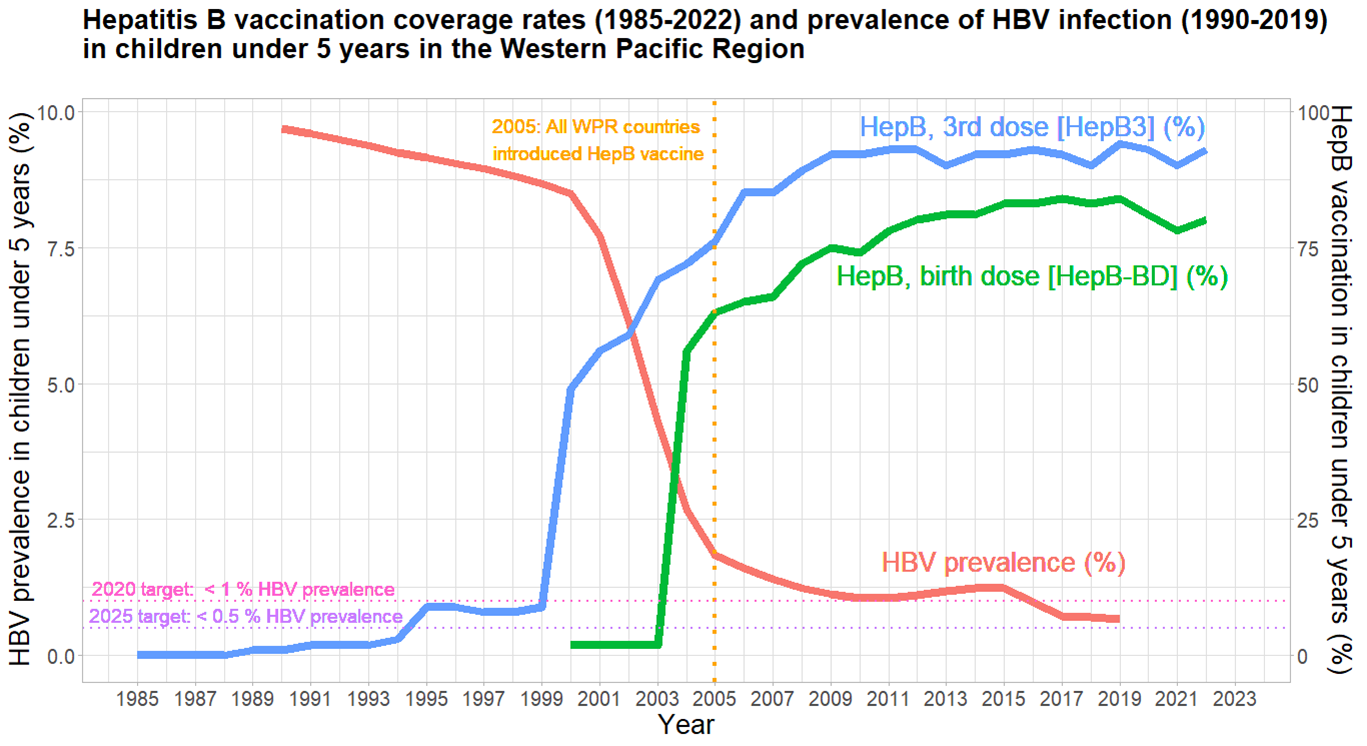Significant progress in controlling Hepatitis B through national vaccination programs in the Western Pacific Region
The Western Pacific Region holds one third of the global burden of hepatitis B, with 116 million people living with chronic hepatitis B infection.
However, the Region has achieved significant progress in controlling hepatitis B through national vaccination programmes. In the past two decades the percentage of infants who have received the recommended three doses of the hepatitis B vaccine has increased from 49% in 2000 to 93% in 2022 (See below graph).
With the adoption of effective programmes to immunize children against hepatitis B, the Region has witnessed a 92% reduction in the estimated prevalence of hepatitis B infection in children under age 5 between 2000 and 2019. During this period, the prevalence of hepatitis B virus among children decreased from 8.48% to 0.68%. As a result, the Region already met the 2020 target of reducing the prevalence of hepatitis B surface antigen (HBsAg) to below 1% in children under age 5 (less than 700 000 infections in 2019) and is currently on track to achieve the next global targets of 0.5% for 2025 and 0.1% for 2030.
Nevertheless, major coverage gaps remain in some countries in the Western Pacific. Many hepatitis cases – and deaths – can also be prevented through vaccines, as well as several effective prevention modalities including safe injection, safe blood transfusion and harm reduction as well as therapies or cures for hepatitis B.

This graph highlights the coverage rates of Hepatitis B vaccination (HepB-BD and HepB3) during the period 1985-2022 and the evolution of hepatitis B virus (HBV) prevalence among children during the period 1990-2019. The red curve shows the prevalence rate of hepatitis B infection (HBsAg) among children ≤5 years (left y-axis). The blue curve is the percentage of children ≤5 years who received the hepatitis B birth dose vaccine (HepB-BD); and the green curve is the percentage of children ≤5 years who received the hepatitis B third dose vaccine (HepB3) (left y-axis). The dashed orange line highlights the year 2005 when all Western Pacific countries introduced Hepatitis B vaccines into their national childhood immunization schedules. However, it is worth mentioning that some countries started providing Hepatitis B vaccinations during the late 1980s or early 1990s, and that historical data for regional vaccine coverage averages is relatively limited. In fact, HepB3 coverage data is available for the period 1985-2022 , while available HepB-BD data starts from the year 2000. The dotted purple lines show the global targets for the elimination of mother-to-child transmission (MTCT) of HBV for the years 2020 and 2025.
Also see: World Hepatitis Day
Data sources:
(1) Institute for Health Metrics and Evaluation (IHME) ;
(2) WHO/UNICEF Estimates of national Immunization Coverage (WUENIC)